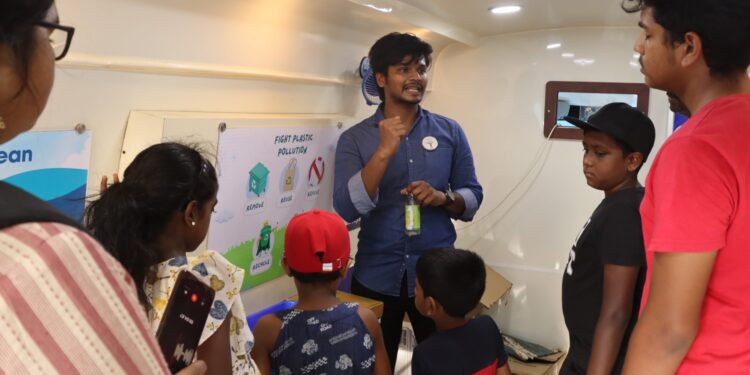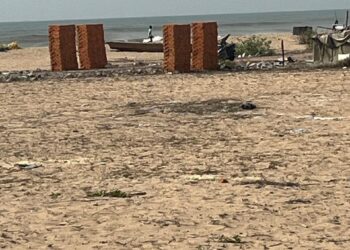The ‘Lakes on Wheels’ vehicle by the Environmentalist Foundation of India was stationed at the Palavakkam beach on May 10. This initiative where the bus is transformed into a Water Museum, aims to create awareness about the threats to marine life, especially the lakes and other river bodies.
The exhibition educated the public about the various aspects of marine ecology, how pollution has impacted it and how the water bodies can be restored. They also explained to the audience why conserving and maintaining water bodies is important.

This exhibition was the second edition, the first of which was conducted at Valmiki Nagar, Thiruvanmiyur. The exhibition also had many hands-on science experiments and activities for the children. They demonstrated how they could help germinate underwater plants – the team created balls using red soil, cow dung, and seeds, which were thrown into the water. Shortly these seeds take root and glow, contributing to the aquatic ecosystem.
Interesting facts
Here are some of the interesting facts shared at the exhibition
- Stepwells, also known as vavs or baori, are structures found in western India that served as wells, cisterns, or ponds. They are characterised by a long corridor of steps that descend to the water level. Some stepwells are multi-storeyed and can be accessed by a Persian wheel, which is operated by a bull to bring water to higher floors.
- If photosynthesis were to cease, it would have a catastrophic effect on both plants and animals. Plants produce oxygen through photosynthesis, which is essential for the survival of most animals. Additionally, many animals rely on plants for food. Without photosynthesis, plants would die off quickly, leading to a collapse of ecosystems and a drastic reduction in food sources for animals.
- ‘Aagaya thamarai’ is another name for the water hyacinth plant, which is known for its ability to grow rapidly and form dense mats on the surface of water bodies.











